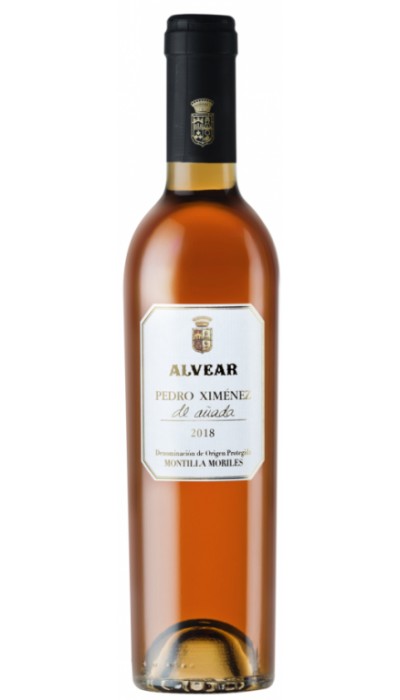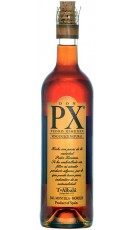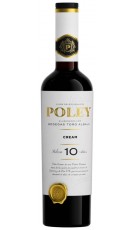Pedro Ximénez de Añada 2019
Wine made with grapes of the Pedro Ximénez variety raisined in the sun, from a single harvest and with a subsequent assembly in reinforced cement cones for at least one year.
Prices VAT included
| Color and Appearance: | Light amber, with some green reflection. Dense wine, with abundant tears when shaking the tasting glass. |
| Nose / Aroma: | Very evident notes of honey, sweet quince and dried fig. White flowers and, above all, raisined grape dominating the rest of the olfactory notes. Very elegant. |
| Mouth / Flavors: | Sweetness very well integrated with its alcohol content. Subtle acidity with hints of citrus peel. Date, honey, dried apricots and quince jelly. High volume. |
| Recommendations: | Temperature: 6 - 8º C |
| Food Pairing: | Ideal complement and culmination for the desserts of a good meal. Provides surprising flavor and texture to ice cream and nuts. Perfect with Foie and blue cheeses. |
| Kind of wine: | Sweet wine. |
| Grape Varieties: | 100% Pedro Ximénez. |
| Alcohol: | 16% vol. |
BODEGAS ALVEAR

Alvear Wineries
Alvear, founded in 1729, is today one of the most prestigious and internationally recognized wineries in Andalucia. Situation within the Montilla-Moriles Denomination of Origin.
Throughout its history, the Alvear winery has preserved its family character while maintaining its roots. The Alvears of today are very numerous, more than 50 are now the owners, and some of the managers of the company are also members of the family.
Alvear distributes its brands throughout the country, its main market being the Mediterranean area from Catalonia to Algeciras.
The entire history of the family at the service of one hundred hectares of exceptional vineyards. Under the protection of the Denomination of Origin "Ribera del Guadiana" are the Tempranillo, Cabernet Sauvignon and Garnacha varieties with which we make high-quality wines.
Pedro Ximémez
It is the queen white variety of the Montilla-Moriles Denomination of Origin and also of the Alvear vineyards and wines. Originally from the Rhine region, it is said that it was brought to Andalusia by a soldier from the Flanders tercios who gives it its name.
The vineyard is generally grown on very calcareous soils. Two types are distinguished in the area: “albarizas or alberos”, very limestone and permeable soils, with little organic matter content and low productivity, where the longest and most balanced ripening grapes are obtained; and the "ruedos", reddish soils due to the presence of iron salts, earlier.
The containers used for raising the fino are called "boots" with an approximate capacity of 500 liters. The preferred wood, due to its porosity, is American oak. New wood should never be used. The boots are arranged inside the warehouses in rows of several floors called cachones. The corridor between two cachones is called an andana, and each one of the boot floors is called a criadera. The criandera closest to the ground is the solera; the one located immediately above, first criadera; the next, second criadera and so on. Each criadera contains wine of the same level of aging; the solera, the one with the most upbringing, the first criadera, the next level of upbringing and so on up to the youngest criaderas.
The wines of Alvear, with the protagonist grape being Pedro Ximénez, a grape that becomes the sole base of its fine, oloroso, amontillado wines and of course the Pedro Ximénez sweets.
Featured products

(+34) 91 129 11 11
(+34) 638 458 218
- Brandy
- Cognac
- Gin Premium
- Ron
- Whisky
- Denomination of Origin
- Winery




































